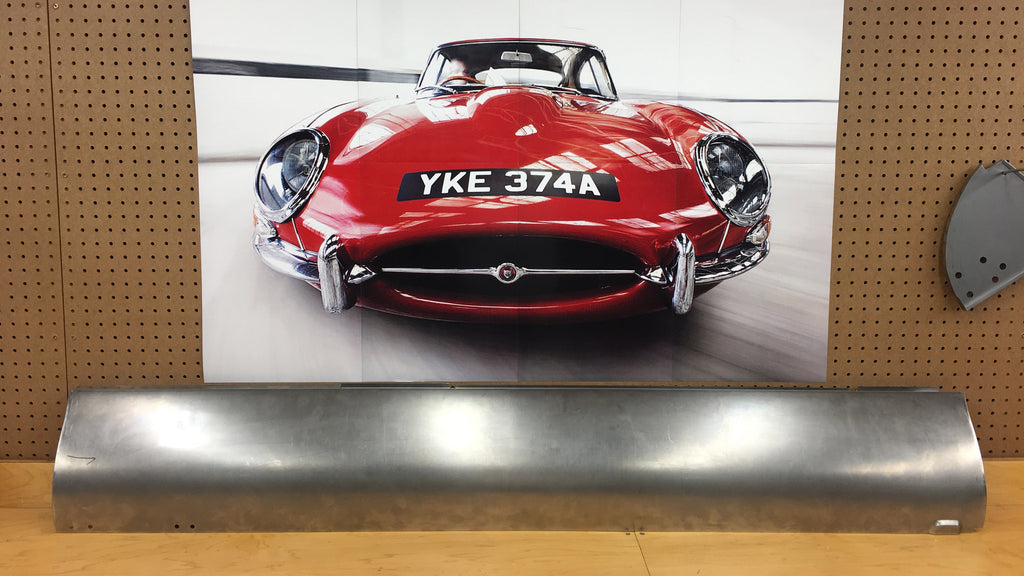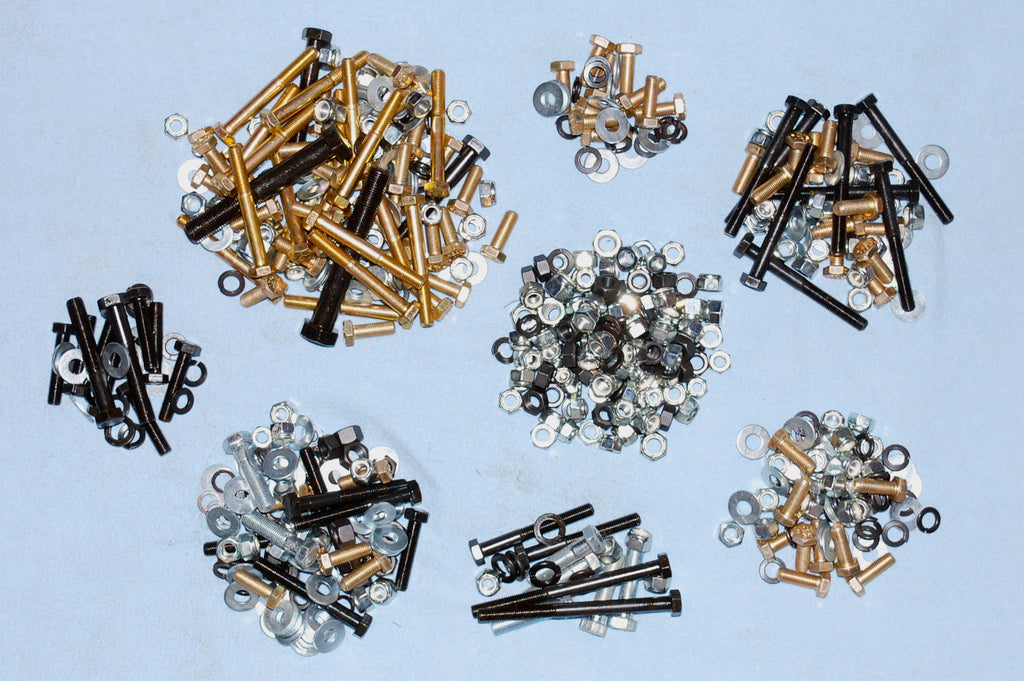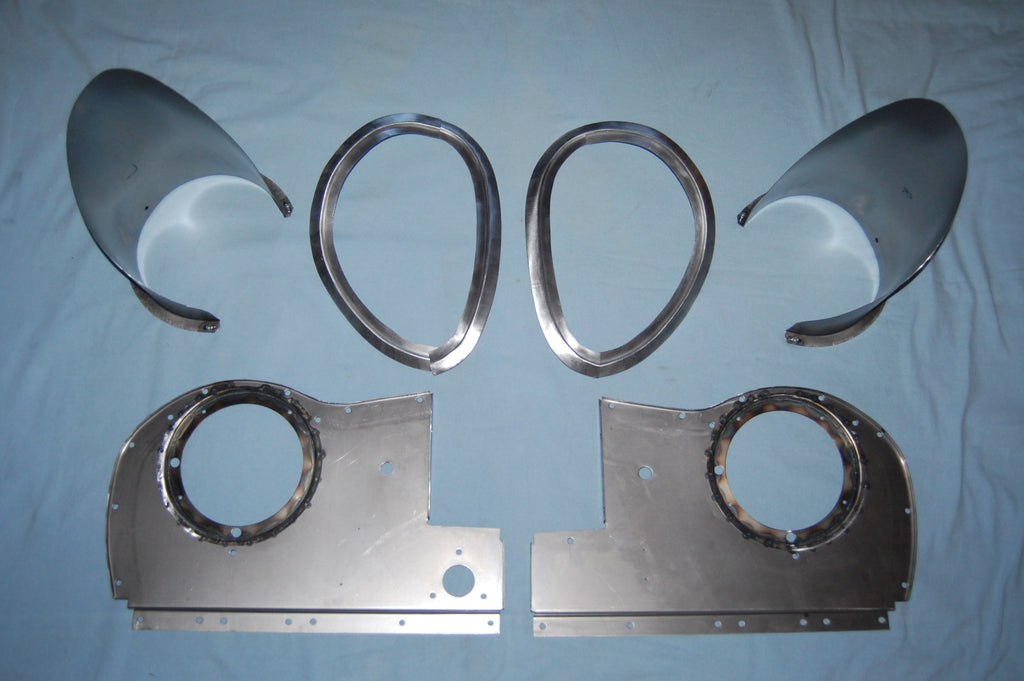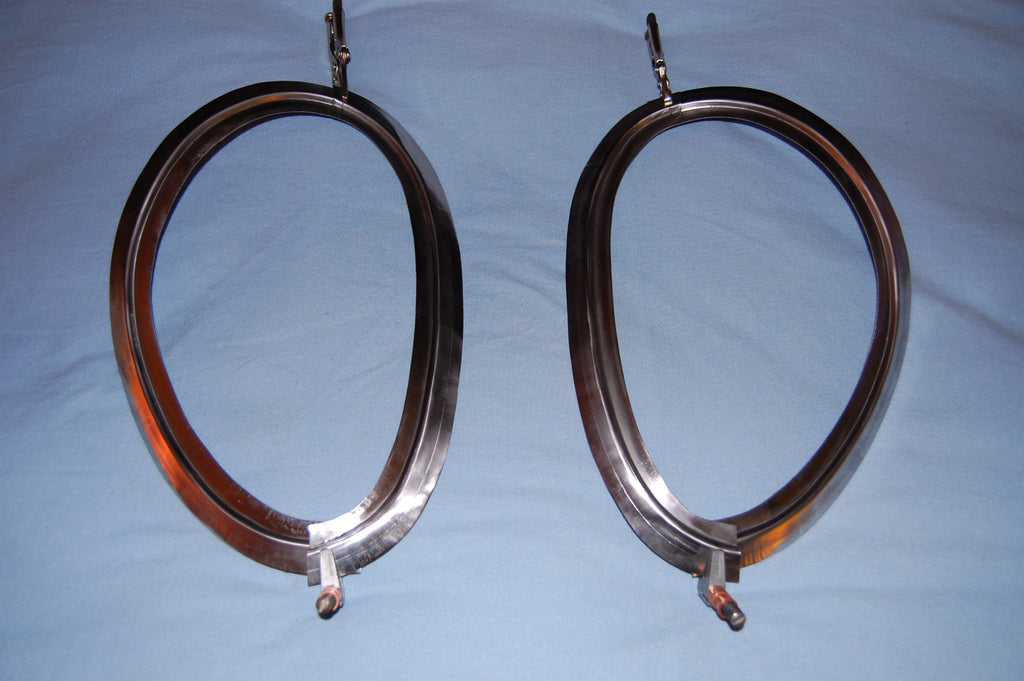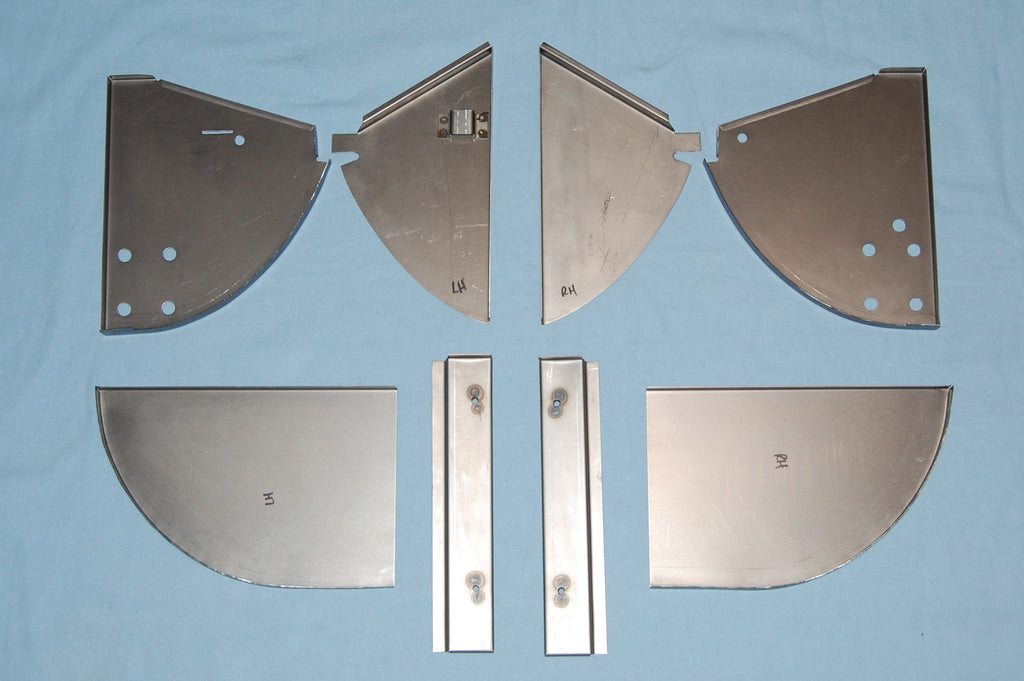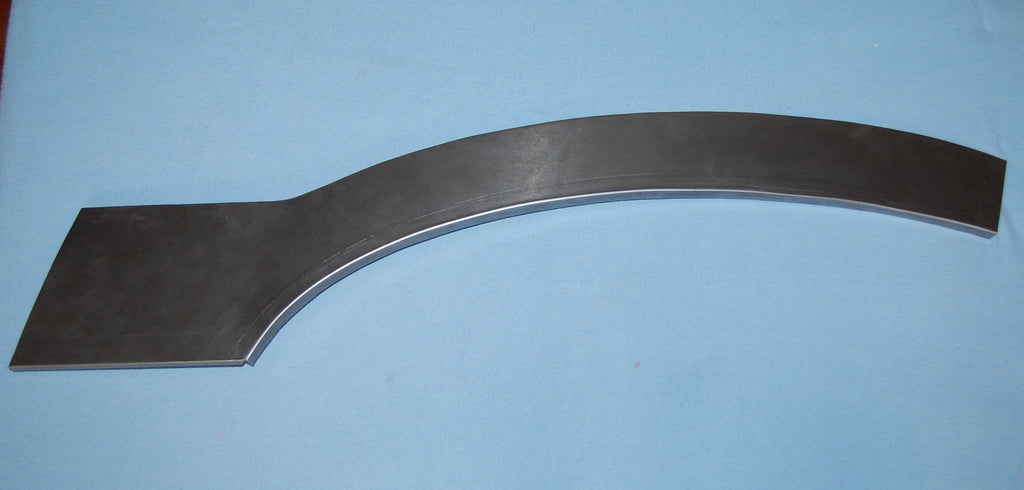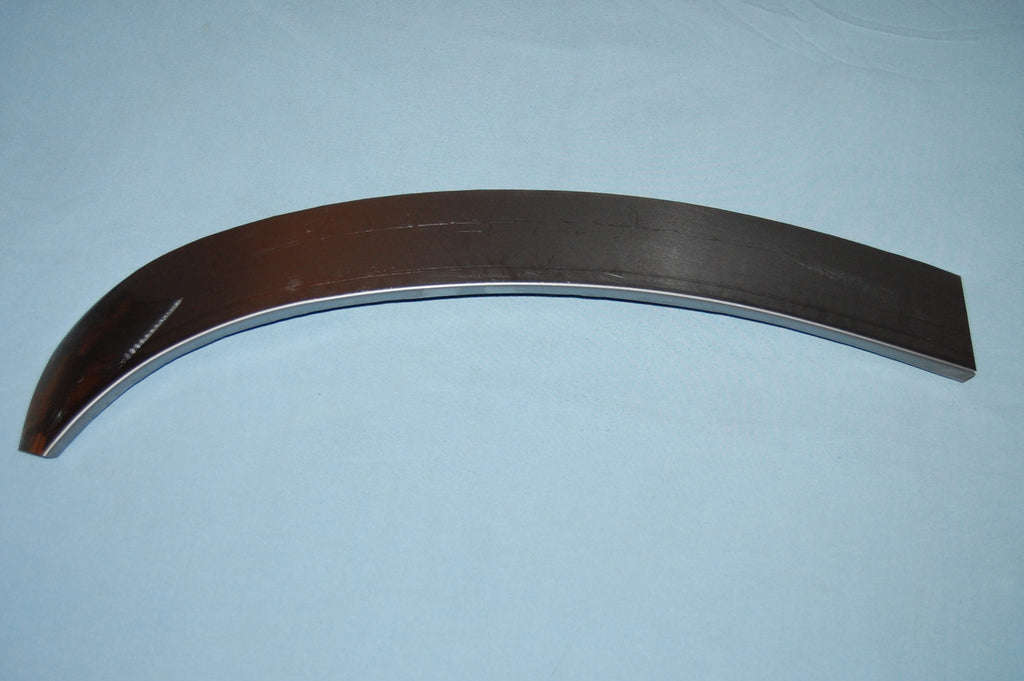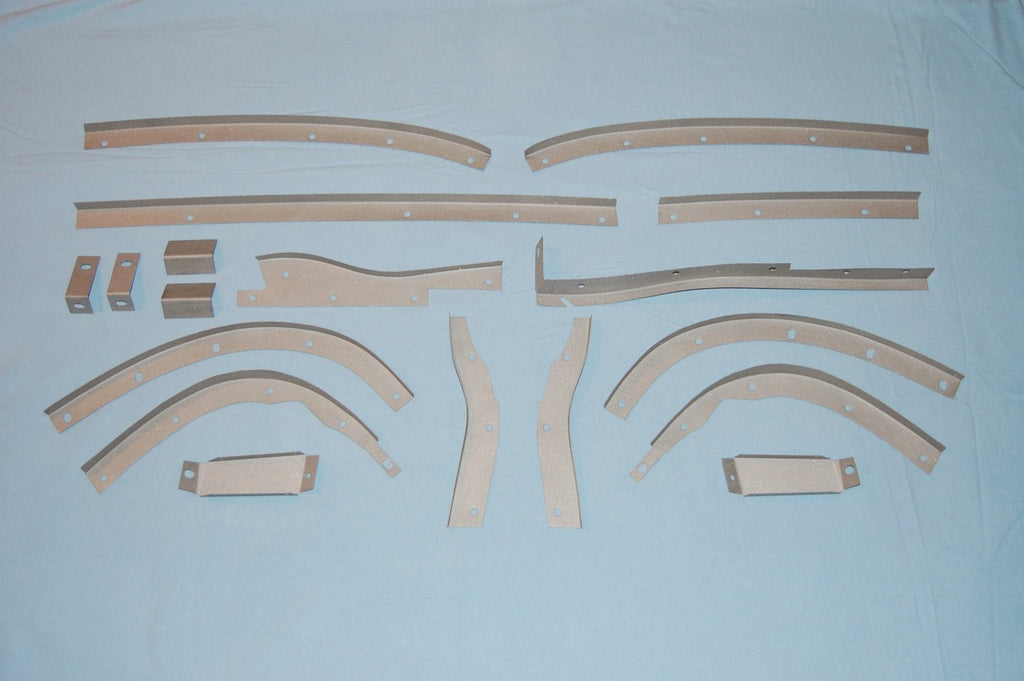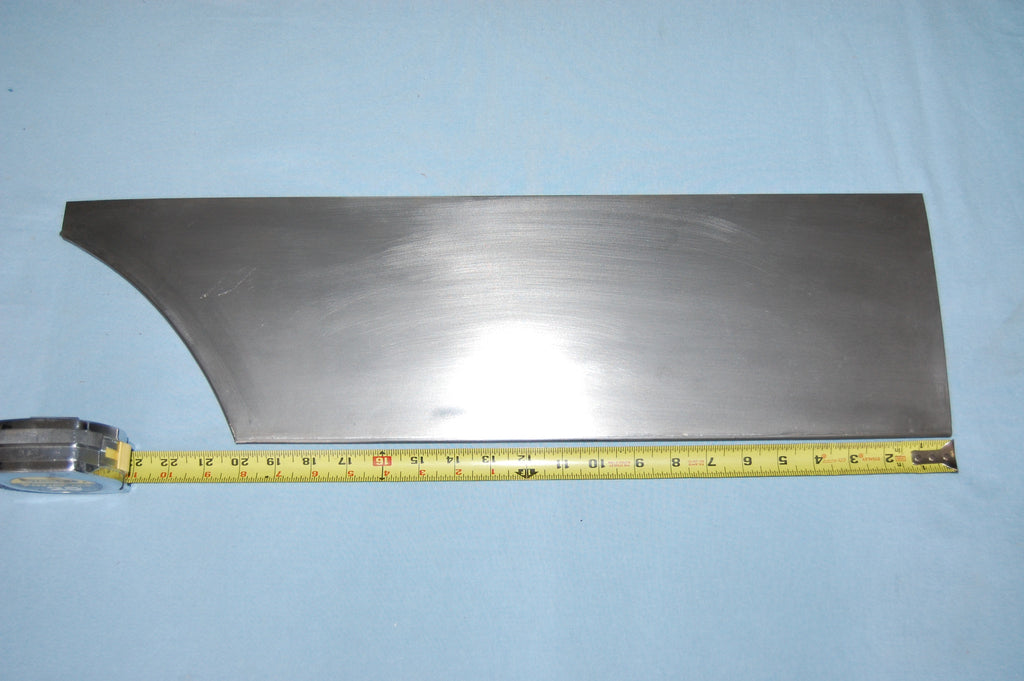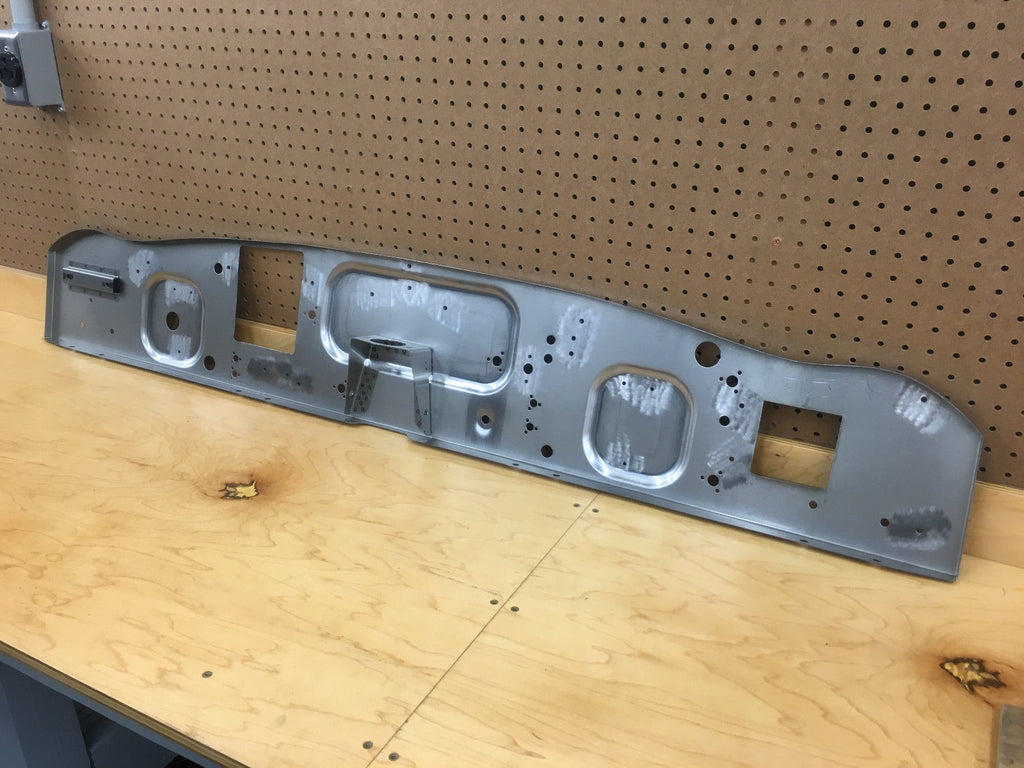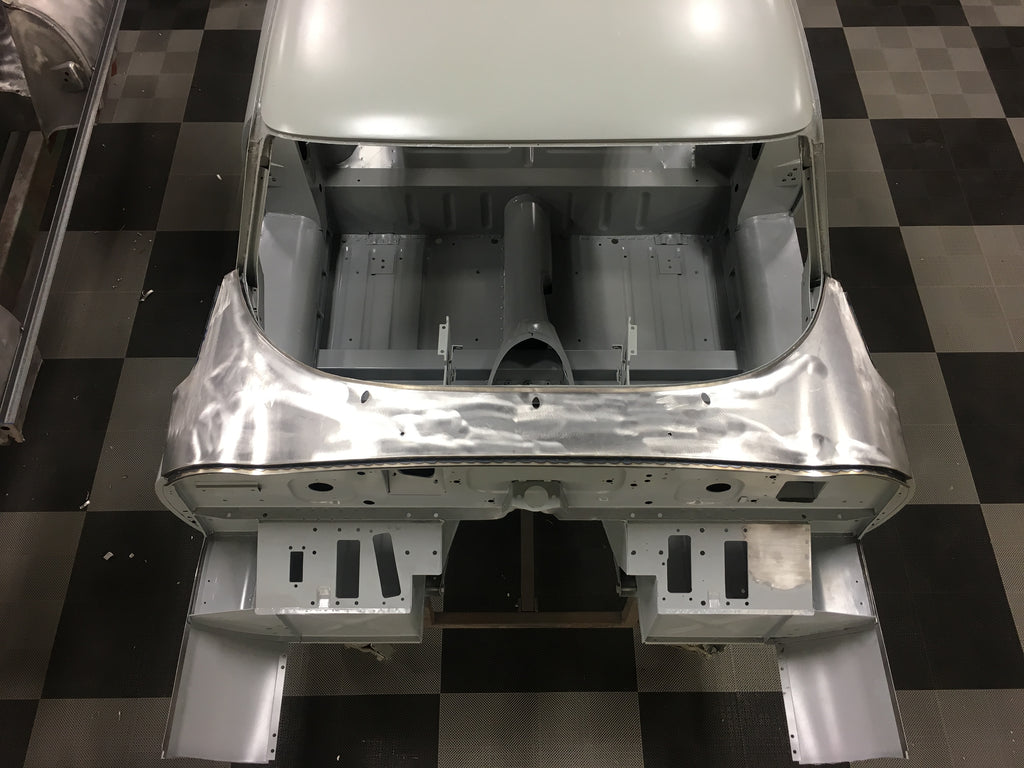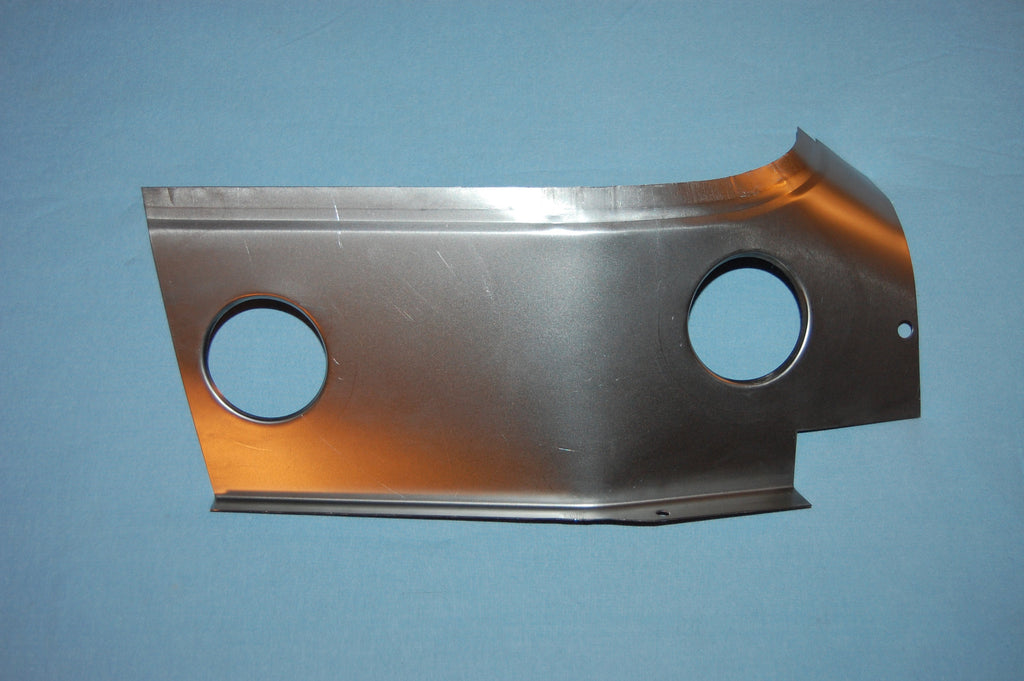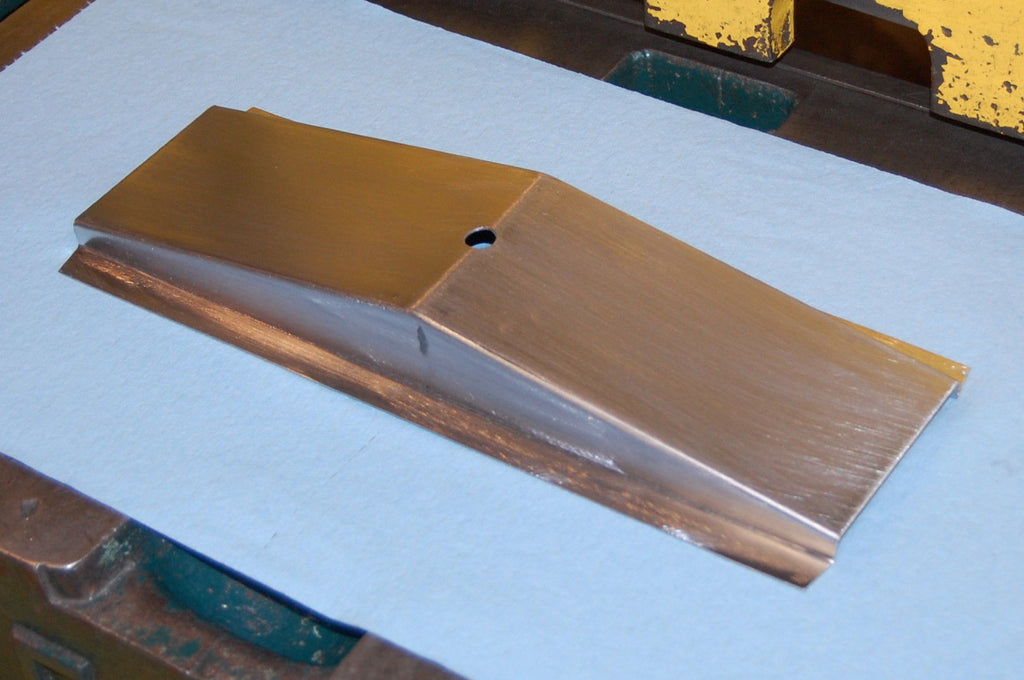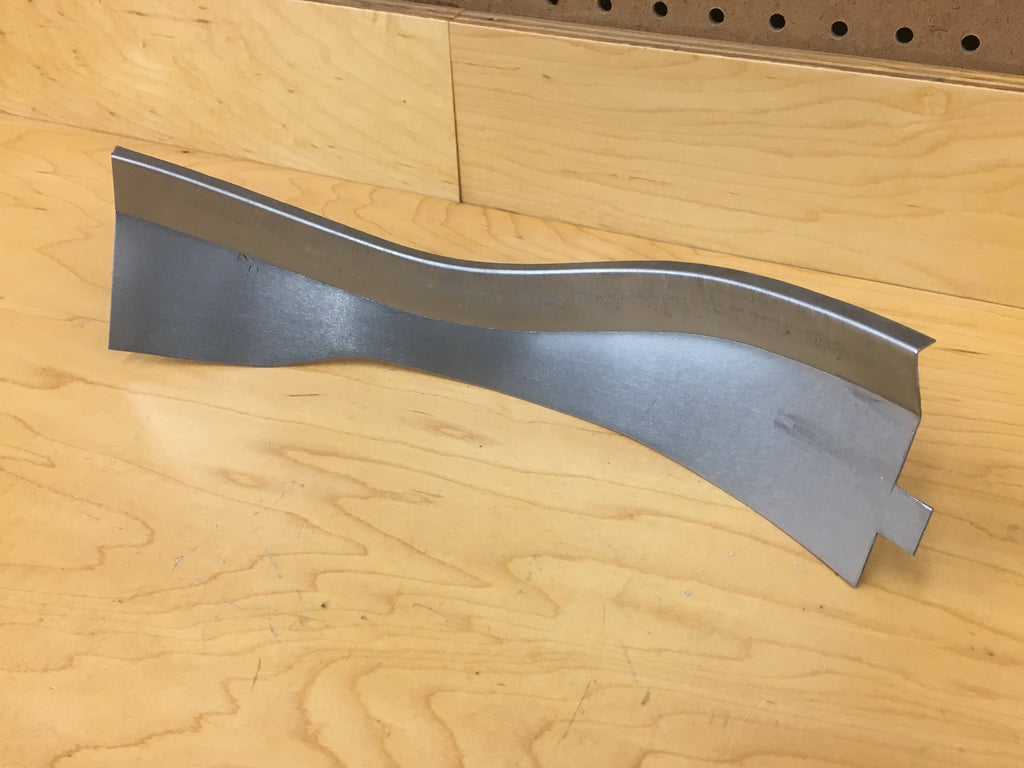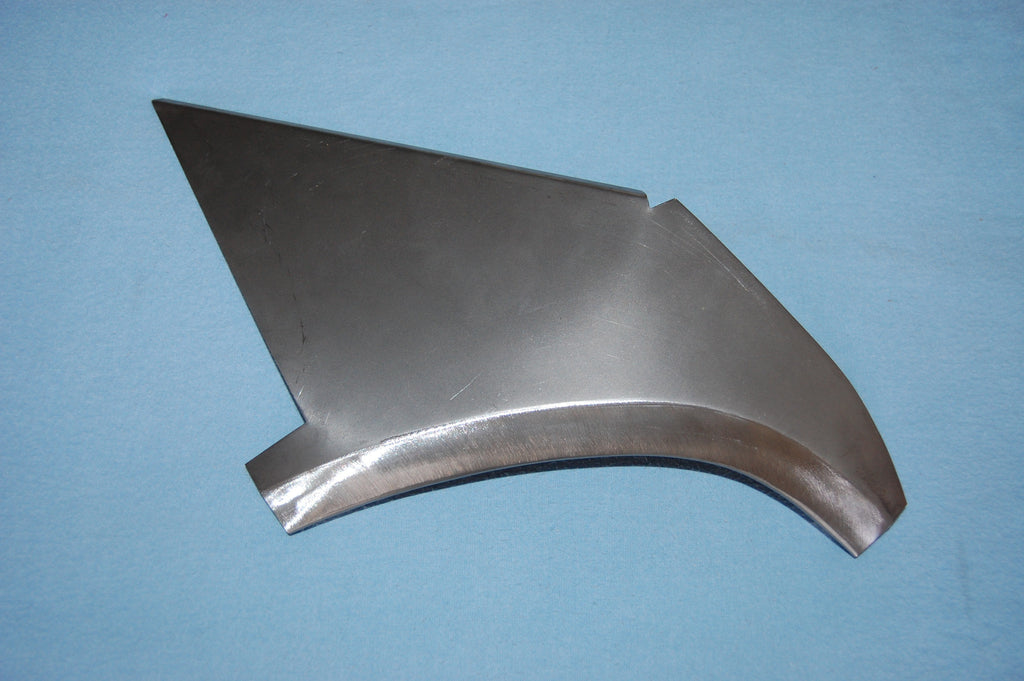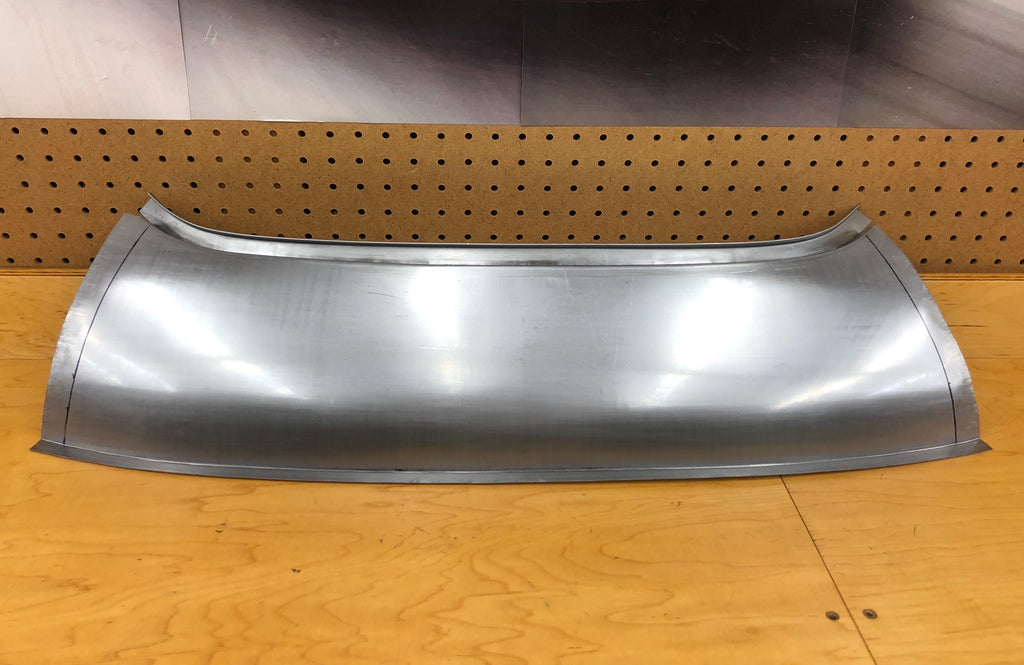Most people think all Series 1 bonnets are the same… NOT TRUE – there are actually 3 different styles! Read on to learn the subtle differences and changes made during production of the Series 1 cars.
Style A – 1961 – Many people already know that the early cars had louvers stamped in a separate panel that were spot-welded into the center section. It’s important to note that these louvers are the same number and width as the pressed louvers, but they are different. Another interesting tidbit is that the funny little dish on the top surface of the 3.8 fiberglass heater intake is there to clear the turned edge of the welded louvers on early bonnets.
Eventually, people also realize that the flanges themselves are also spot-welded to the outer skin instead of being bonded, or “glued” like most E-Type bonnets. I found this out when I was younger and working at the Jag shop, and had already wrecked a couple bonnets and rebuilt them (I had some “fast driving issues” back then…), and my immediate thought was, “That’s WAY better! This glue is stupid and just having them welded in so they never come off and are on there solidly would be a lot better.” Well, that seems better, but it’s actually not – it creates A LOT of issues during production AND as the car ages…
The early cars had all of the center section and wing flanges, including the more intricate flange at the rear of the bonnet – spot-welded to the outer skin. These flanges were also a little taller than the bonded flanges – they basically shortened them up about 3/16” to make room for the bonding. I believe they switched away from the welded flanges for 3 reasons:
A) To save time in assembly – welding these in has to have taken longer than bonding them. While the spot welding itself is very quick, the flanges must be MUCH more exact in their shape. The bonding process was quick and a less involved process – especially the way they slopped it on at the factory!
B) To save time in finishing – when you weld the flanges on, you put a slight dimple in the outer skin on every weld, and these must be ground slightly, and filled before the finish paint can be applied. This must have added a great deal of finish time, and many 1961 cars had more than one spot-weld showing through the finished bonnet from the factory.
C) To save the bonnet’s finish down the road! – Here’s the part you don’t understand unless you own and drive an E-Type with a welded-flange bonnet – there’s no “give” in the structure, and sooner or later, that causes problems… After just a few thousand miles, simply driving the car and hitting various bumps causes shock loads to go through the bonnet, and those welded flanges push the outer skin to the point where the paint cracks, or you even get a little outward “pinch” here and there. After a longer period of time, rust starts to form between these flanges and the outer skin, and that rust builds and expands within the flange, and eventually has nowhere to go and starts pushing outward like every other flange on an E-Type. This causes the spot-welds themselves to become more pronounced as they stay put while the flange and skin move away from each other, and you get little craters over time…
The third reason is something they may have just started to realize when they finally said “to hell with this!” in late 1961, and shifted to bonding the flanges. This is actually a MUCH better system – it’s faster, the bonding is relatively strong (and today’s products are even better!), and it allows the outer skin to float on a cushioned pad…
In my opinion, the only way to properly restore an original welded-flange bonnet is to pull ALL of the flanges off the skin, and start over after sandblasting the surface rust from the underside of the skin. Then new flanges should be made, and they should be spot-welded back onto the skin after the flange AND the skin have been coated with zinc weld-thru primer. Not doing this after 50 years is GUARANTEED to cause problems after the car is painted…
Style B – 3.8 – I call the next style “3.8”, but like most things on an E-Type, it is just a feature that somewhat follows the 3.8/4.2 shift timeframe. These bonnets have pressed louvers in the center section, and bonded flanges. All of the flanges were bonded to the outer skin along their full length, except the rear-most flange which gives the bonnet structural support where it meets the cowl. These flanges were still spot-welded at the ends with one spot on each side, and then glued along the remainder of their length – I assume this was for additional strength, particularly in the wings, since this flange also contains the mount and caged nuts for the bonnet latches. That flange is stepped at the bottom 1” – so that the very end can be spot-welded flush against the outer skin, and the rest of the flange can ride approx. 1/8” above the skin to give room for the bonding agent.
In addition, 3.8 bonnets have horn brackets welded into the inside face of the main support member that contains the bonnet hinge mounting points, etc. This bracket is 16-gauge, which is total overkill for mounting the horns (the originals are kind of heavy, though…) – I believe this is because it also serves to substantially stiffen the support member.
Style C – 4.2 – 4.2 bonnets also have pressed louvers and bonded flanges, but there are slight changes to the bottom end of the middle wing flanges that GREATLY improves this area! A small 16-gauge tab is welded in to tie the flange into the lower beaded edge of the wing, and also ties the beaded edges together in that corner. This is a vast improvement over the 3.8 bonnets, where this flange often would begin to become separated from the outer skin.
Finally, later Series 1 cars did not carry the large, round horns inside the forward area of the bonnet, but instead had smaller horns mounted underneath the radiator support member. Unlike many of the changes on E-Types, this one I DON’T like… I think have the horns hidden in the bonnet is a better design, and I recommend to customers with these cars (who are not building a 100-point show car) to go ahead and switch back to the 3.8 design it they are replacing the main support member.
So, in conclusion, from a design and strength standpoint, the best Series 1 bonnet to have is the later style, with pressed louvers and bonded flanges, also incorporating the welded brace in the rear lower corner of the forward wheel openings. If you can add the horn brackets for strengthening the support member and hiding the horns, even better!


